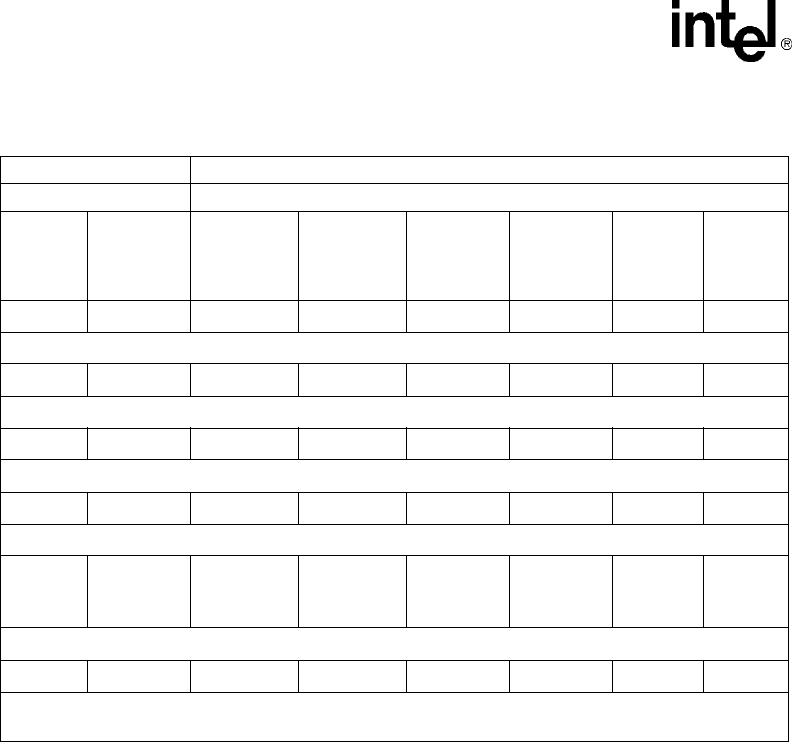User's Manual
Table Of Contents
- Contents
- Figures
- Tables
- Revision History
- About This Publication
- 1. Product Description
- 2. Programming Models
- 3. Device Handling
- 4. Event Handling
- 5. Error Handling
- 6. Application Development Guidelines
- 7. Call Progress Analysis
- 7.1 Call Progress Analysis Overview
- 7.2 Call Progress and Call Analysis Terminology
- 7.3 Call Progress Analysis Components
- 7.4 Using Call Progress Analysis on DM3 Boards
- 7.5 Call Progress Analysis Tone Detection on DM3 Boards
- 7.6 Media Tone Detection on DM3 Boards
- 7.7 Default Call Progress Analysis Tone Definitions on DM3 Boards
- 7.8 Modifying Default Call Progress Analysis Tone Definitions on DM3 Boards
- 7.9 Call Progress Analysis Errors
- 7.10 Using Call Progress Analysis on Springware Boards
- 7.11 Call Progress Analysis Tone Detection on Springware Boards
- 7.12 Media Tone Detection on Springware Boards
- 7.13 Default Call Progress Analysis Tone Definitions on Springware Boards
- 7.14 Modifying Default Call Progress Analysis Tone Definitions on Springware Boards
- 7.15 SIT Frequency Detection (Springware Only)
- 7.15.1 Tri-Tone SIT Sequences
- 7.15.2 Setting Tri-Tone SIT Frequency Detection Parameters
- 7.15.3 Obtaining Tri-Tone SIT Frequency Information
- 7.15.4 Global Tone Detection Tone Memory Usage
- 7.15.5 Frequency Detection Errors
- 7.15.6 Setting Single Tone Frequency Detection Parameters
- 7.15.7 Obtaining Single Tone Frequency Information
- 7.16 Cadence Detection in Basic Call Progress Analysis (Springware Only)
- 8. Recording and Playback
- 8.1 Overview of Recording and Playback
- 8.2 Digital Recording and Playback
- 8.3 Play and Record Functions
- 8.4 Play and Record Convenience Functions
- 8.5 Voice Encoding Methods
- 8.6 G.726 Voice Coder
- 8.7 Transaction Record
- 8.8 Silence Compressed Record
- 8.9 Recording with the Voice Activity Detector
- 8.10 Streaming to Board
- 8.11 Pause and Resume Play
- 8.12 Echo Cancellation Resource
- 9. Speed and Volume Control
- 10. Send and Receive FSK Data
- 11. Caller ID
- 12. Cached Prompt Management
- 13. Global Tone Detection and Generation, and Cadenced Tone Generation
- 13.1 Global Tone Detection (GTD)
- 13.1.1 Overview of Global Tone Detection
- 13.1.2 Global Tone Detection on DM3 Boards versus Springware Boards
- 13.1.3 Defining Global Tone Detection Tones
- 13.1.4 Building Tone Templates
- 13.1.5 Working with Tone Templates
- 13.1.6 Retrieving Tone Events
- 13.1.7 Setting GTD Tones as Termination Conditions
- 13.1.8 Maximum Amount of Memory for Tone Templates
- 13.1.9 Estimating Memory
- 13.1.10 Guidelines for Creating User-Defined Tones
- 13.1.11 Global Tone Detection Application
- 13.2 Global Tone Generation (GTG)
- 13.3 Cadenced Tone Generation
- 13.3.1 Using Cadenced Tone Generation
- 13.3.2 How To Generate a Custom Cadenced Tone
- 13.3.3 How To Generate a Non-Cadenced Tone
- 13.3.4 TN_GENCAD Data Structure - Cadenced Tone Generation
- 13.3.5 How To Generate a Standard PBX Call Progress Signal
- 13.3.6 Predefined Set of Standard PBX Call Progress Signals
- 13.3.7 Important Considerations for Using Predefined Call Progress Signals
- 13.1 Global Tone Detection (GTD)
- 14. Global Dial Pulse Detection
- 14.1 Key Features
- 14.2 Global DPD Parameters
- 14.3 Enabling Global DPD
- 14.4 Global DPD Programming Considerations
- 14.5 Retrieving Digits from the Digit Buffer
- 14.6 Retrieving Digits as Events
- 14.7 Dial Pulse Detection Digit Type Reporting
- 14.8 Defines for Digit Type Reporting
- 14.9 Global DPD Programming Procedure
- 14.10 Global DPD Example Code
- 15. R2/MF Signaling
- 16. Syntellect License Automated Attendant
- 17. Building Applications
- Glossary
- Index

166 Voice API Programming Guide — June 2005
Global Tone Detection and Generation, and Cadenced Tone Generation
13.3.7 Important Considerations for Using Predefined Call
Progress Signals
Take into account the following considerations when using the predefined call progress signals:
• Signal definitions are based on the TIA/EIA Standard: Requirements for Private Branch
Exchange (PBX) Switching Equipment, TIA/EIA-464-B, April 1996 (Telecommunications
Industry Association in association with the Electronic Industries Association, Standards and
Technology Department, 2500 Wilson Blvd., Arlington, VA 22201). To order copies, contact
Global Engineering Documents in the USA at 1-800-854-7179 or 1-303-397-7956.
• A separate Line Lockout Warning Tone, which indicates that the station line has been locked
out because dialing took too long or the station failed to disconnect at the end of a call, is not
necessary and is not recommended. You can use the Reorder tone over trunks; or the Intercept,
Reorder, or Busy tone over stations.
• For signals that specify an infinite repetition of the signal cycle (cycles = 255 on Springware or
40 on DM3) or an infinite duration of a tone (tg_dur = -1), you must specify the appropriate
termination conditions in the DV_TPT structure used by dx_playtoneEx( ).
• There may be more than one way to use TN_GENCAD to generate a given signal. For
example, the three bursts of the Confirmation Tone can be created through one cycle
containing three segments (as in the Intel implementation) or through a single segment that is
repeated in three cycles.
CP_BUSY_VERIFY_A
1 1 440 0 -14 0 175 0
CP_BUSY_VERIFY_B
255 1 440 0 -14 0 60 900
CP_EXEC_OVERRIDE
1 1 440 0 -14 0 300 0
CP_FEATURE_CONFIRM
13350
350
350
440
440
440
-17
-17
-17
-17
-17
-17
10
10
10
10
10
0
CP_STUTTER_DIAL or CP_MSG_WAIT_DIAL
255 1 350 440 -17 -17 125 25
Table 20. TN_GENCAD Definitions for Standard PBX Call Progress Signals (Continued)
SIGNAL_ID
Cycle Definition Segment Definitions
Number
of
Cycles
1
Number of
Segments
in Cycle
Frequency
#1 (Hz)
Frequency
#2 (Hz)
Amplitude
#1 (dB)
Amplitude
#2 (dB)
On-
Time
2
(10
msec)
Off-
Time
(10
msec)
cycles numsegs tg_freq1 tg_freq2 tg_ampl1 tg_ampl2 tg_dur offtime
1
255 specifies an infinite number of cycles (cycles)
2-
1 specifies an infinite tone duration (tg_dur)










